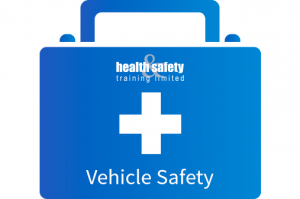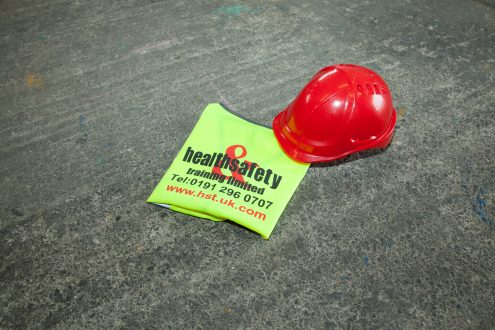The Health and Safety Kit: Vehicle Safety
 No matter what industry you work in, if you work with or around vehicles of any kind, vehicle safety is a huge concern.
No matter what industry you work in, if you work with or around vehicles of any kind, vehicle safety is a huge concern.
There are almost 5,000 accidents each year involving workplace vehicles and, of these, around 50 result in a fatality. From huge plant equipment, cranes and lorries, to smaller lift trucks and cars, each vehicle is chosen specifically for its practicality, but ultimately, without the proper training, care and adherence to regulations, they present a real risk of harm to the driver, pedestrians and other road users.
As an employer, it is your duty to ensure your drivers have all the necessary skills, training and licences to keep themselves and those working around them safe from harm.
The Hazards
Because of the size and weight of even the smallest vehicle, when accidents do occur, they are more likely to cause serious in injury. The majority of accidents however, could have been avoided if the driver had had the correct training and applied in properly. The most common causes of accidents include:
Speed
Whether vehicles are being used on site or on the road, speed limit restrictions will be in place to reduce the likelihood of accidents, and the level of injury or damage caused if there is an accident. It’s important that these restrictions are adhered to at all times, but it is also important that the driver understands his vehicle and load sufficiently to change speed when approaching corners or obstacles.
Loading and Carrying Loads
Loading bays are particularly hazardous because of the combination of busy workers and vehicles. Accidents include workers being knocked down or even becoming trapped by vehicles; workers falling from loading platforms and unsecured loads falling onto workers. Loading bays are typically hectic places with numerous vehicles, which present another set of risks, including multiple vehicle collisions.
The most common use for vehicles in the workplace is transporting good and loads. These loads, if not properly secured can cause smaller vehicles such as forklifts to tip, or obscure the view of the driver resulting in collisions. In larger vehicles, loads can break free and move about, causing the centre of balance to shift. Even the most skilled driver can be caught off guard if the load suddenly shifts, causing the lorry to tip or swerve when cornering or breaking.
Manoeuvring and Reversing
One of the most dangerous times to be around a vehicle is when it is manoeuvring or reversing. This is because of the limited sight of the driver. Even with the assistance of a banksmen to help direct the driver and warn of pedestrians and obstacles, if both the driver and the banksman are not well trained and practiced in the use of all the necessary signs and signals, accidents can occur without warning.
Road markings and zones
Any work site, warehouse or depot that utilises vehicles should have properly marked out routes and zones in which the vehicles can travel, without the concern of bumping into a pedestrian. If the site doesn’t have this, it’s more likely that pedestrians and vehicles will be using the same space, heightening the risk of an accident.
It’s also essential that all routes are properly marked out, so visitors are immediately aware of any potential hazards and that there are appropriate road signs for use by the driver to ensure they maintain the correct speed and position.
Maintenance and Inspection
Faulty vehicles are responsible for fewer accidents, but the damage that can be caused by faulty lifting gear or even worn brake cables can be disastrous.
Another major cause of vehicle accidents is the condition of the vehicles. Without proper and regular maintenance, undertaken by a qualified professional, an employer can’t be certain it is safe and suitable for the job at hand. It’s also important that vehicle operatives are trained to inspect and identify potential issues with their vehicles. Even if they don’t have the mechanical knowledge to rectify the problem themselves, knowing when to call a specialist engineer is essential.
The Law
As with all safety concerns in the workplace, The Health and Safety at Work Act 1974 governs this area of law, but employers are under further duties prescribed by The Provision and Use of Work Equipment Regulations 1998. The main provisions applying to the responsibility of employers using vehicles are:
- All vehicles should be suitable for the required purpose
- They should be properly maintained and regularly inspected
- The use of the vehicle should be restricted to the necessary users
- All operatives, users, supervisors and managers should be given adequate training, detailing working practices, any and all possible risks and all required precautions.
Your Responsibilities
As an employer it is your responsibility to provide a safe working environment for all your staff, and the simplest way to ensure you are doing this is with an effective risk assessment. Risk assessments can be specific for certain hazards, such as fire risk assessments that require more detail, or they can be an extensive singular assessment that covers every risk in your workplace.
You can choose an external company to assist you if you don’t have the necessary training, or can assign responsibility to a competent member of staff. The point of a risk assessment is to identify all possible risks, so you can take appropriate steps to eliminate, or at least reduce, them.
One of the most important aspects of safety that is required by law and should be covered in your risk assessment is to provide your staff with the appropriate training to enable them to carry out their job safely and efficiently.
Available Training
At Health and Safety Training Ltd we offer a wide range of courses that can improve the level of safety at your premises.
The most applicable to vehicle safety are our wide range of forklift operative training courses, as well as plant operative and MEWP operative training. These courses can be adapted to suit the vehicles used on your premises and will give the operatives all the knowledge and skill they need, including how to carry out inspections and understand their legal responsibilities.
We also offer risk assessment training that will train a member of your staff to undertake a sufficient risk assessment, and give them a thorough understanding of its legal implications.
For any more information about how our training can help to keep your business, staff, customers and visitors safe from the risk posed by workplace vehicles, or for a more inclusive education about how to manage your business safely – simply contact our team today for tailored training that reflects your needs.
Unguarded Machinery Results in Fines after HSE Visit Health & Safety Week 2014





